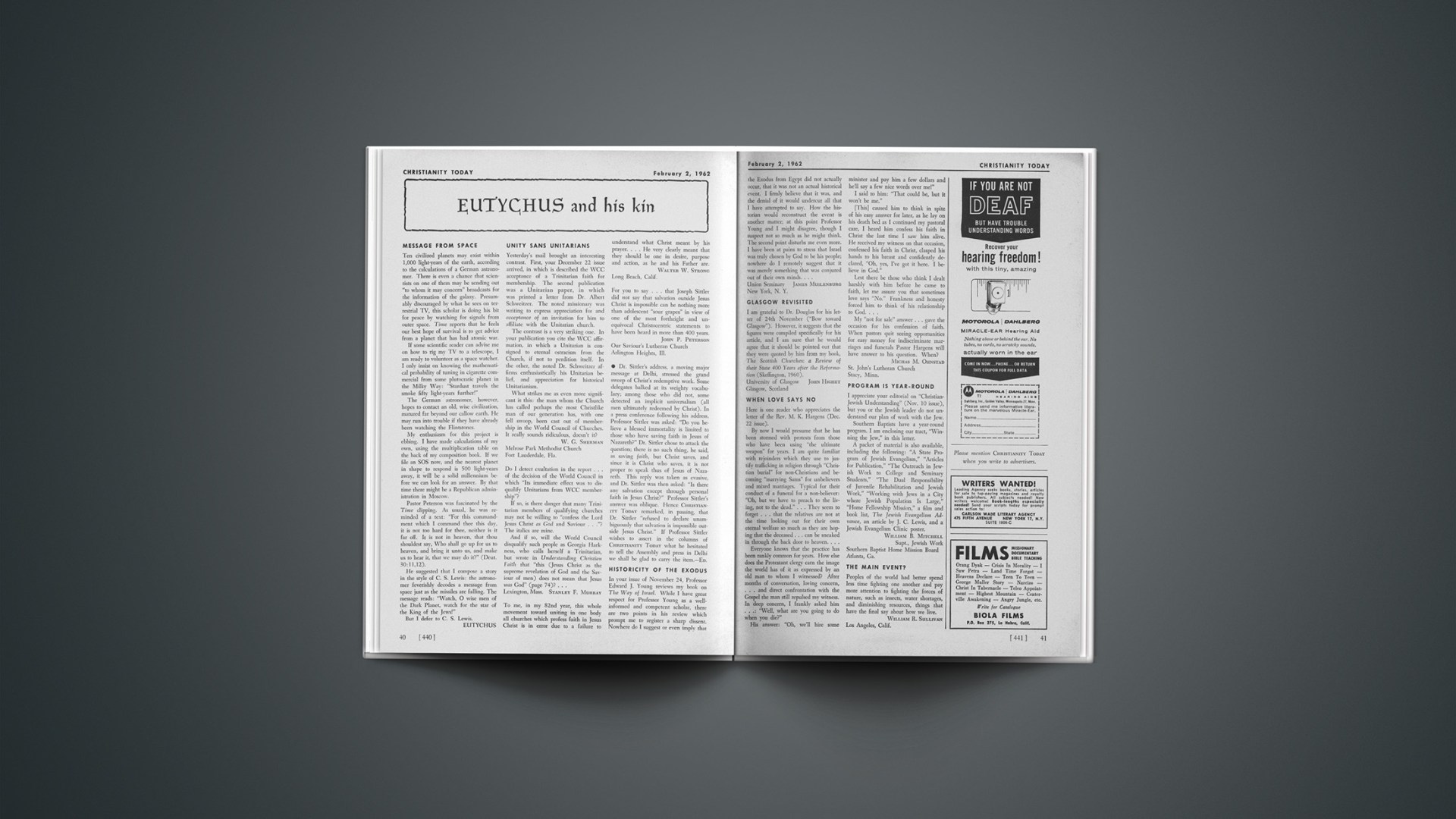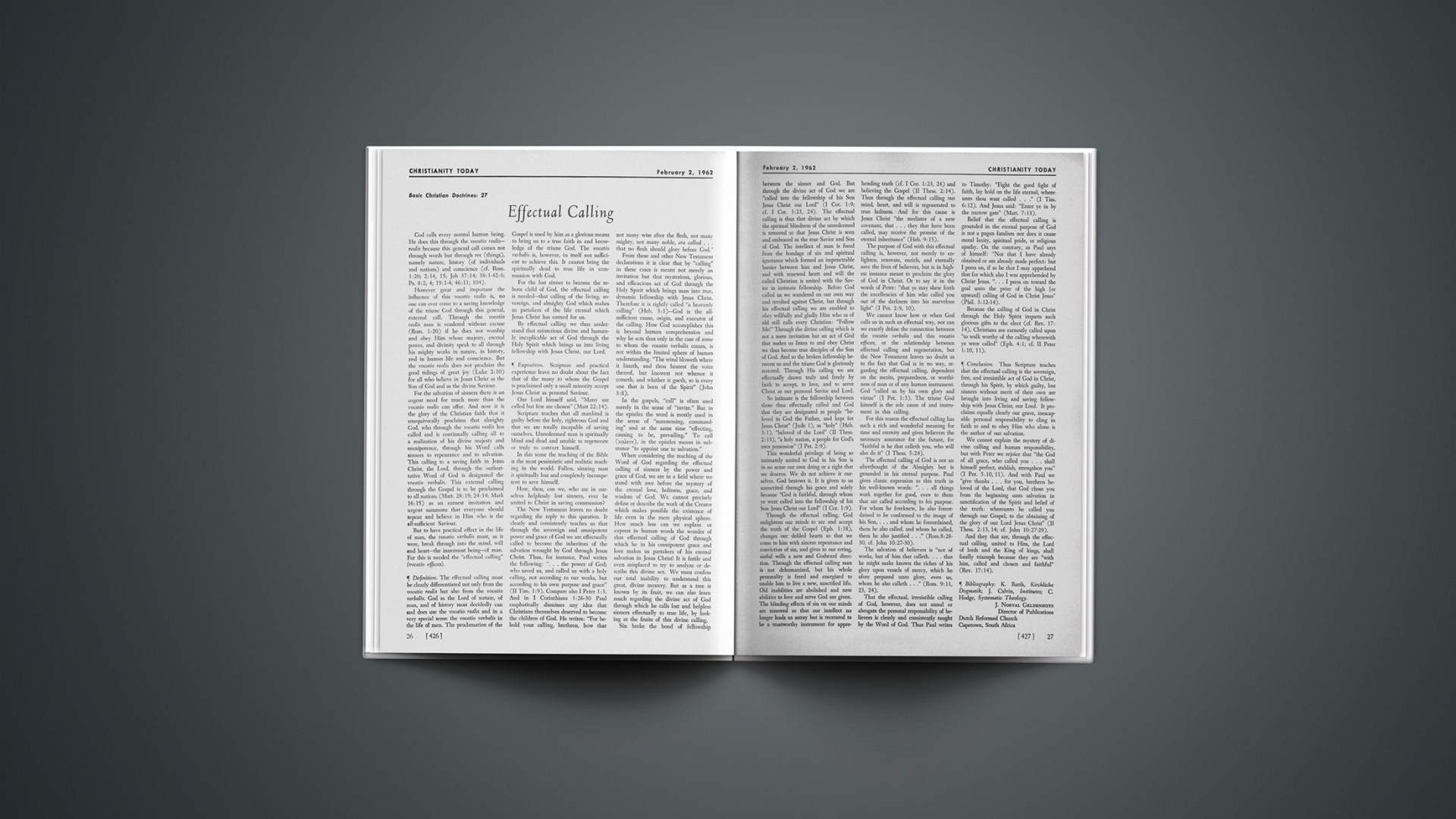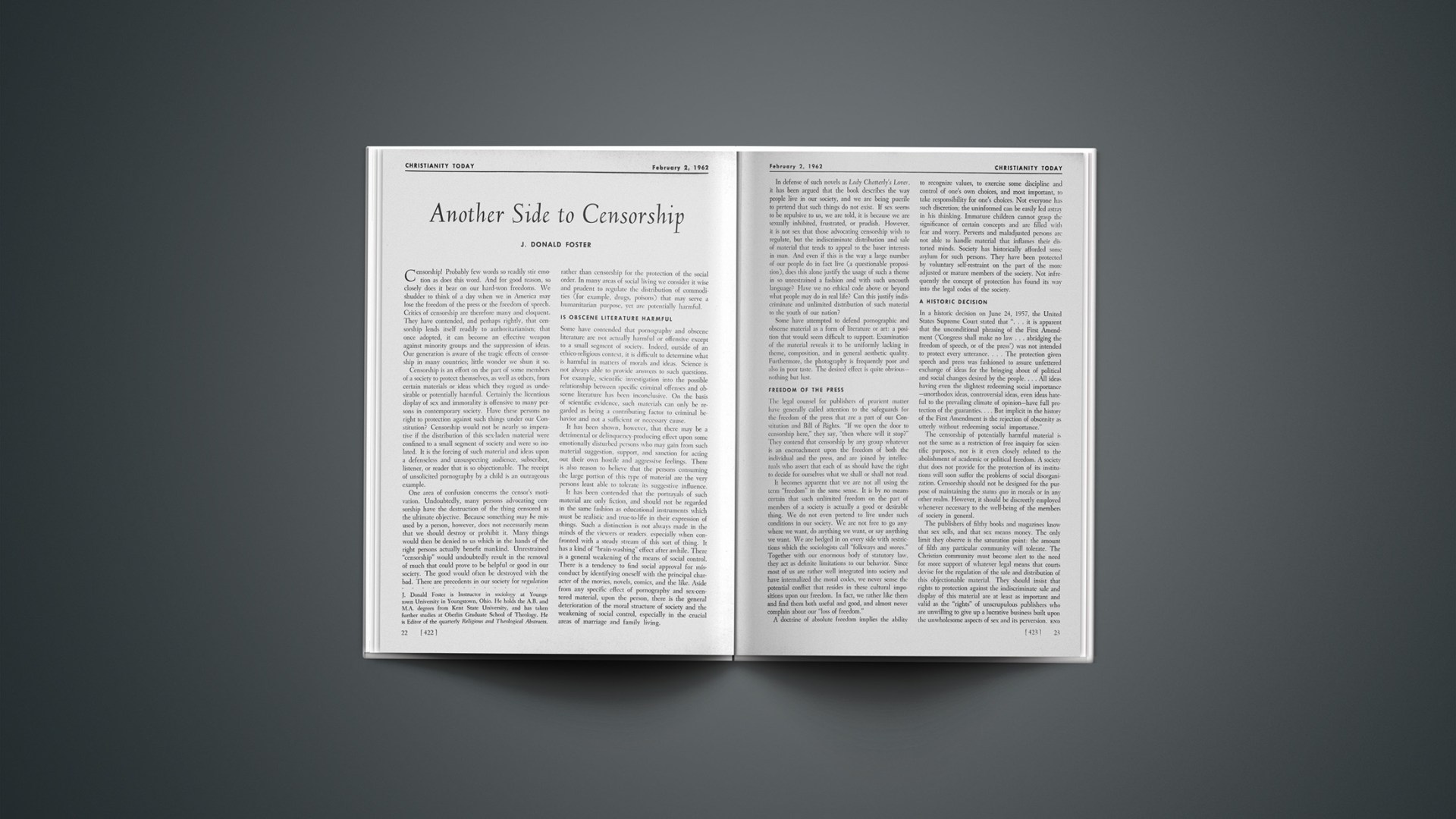The gifted child is receiving attention everywhere. Everywhere, that is, except in church.
Numerous books and articles are being written for secular educators and parents of gifted children. In creasingly aware of the gifted child and his needs, more and more public schools are trying to provide the proper environment and stimulation to develop his great potential. Extensive research is under way to determine better ways to identify, encourage, and educate the gifted child. Leaders like Dr. James Conant and Admiral Rickover state that our survival as a nation may well depend on how thoroughly we develop our talented youngsters for their future responsibilities.
This frantic activity is spurred on by mounting awareness that the gifted child of today may be the Isaac Newton, Benjamin Franklin, or Albert Einstein of tomorrow. Moreover, we are learning—rather belatedly—that unless the gifted child is challenged by proper environment and stimulated by specially adapted education, he may never realize his capabilities, let alone make a commensurate contribution to society.
The church has traditionally believed that man’s highest development involves awareness not only of physical, emotional, and intellectual needs, but very basically of the social and spiritual as well. The church recognizes its peculiar contribution in the areas of spiritual values, ethics, morality, and human relationships.
Major pressures today include the constant terror of the cold war—and the burst of scientific and related technological advancement. Our continued survival, however, may well depend more upon our spiritual and social skills than upon our scientific dexterity.
Some of our leaders know this. J. Edgar Hoover, writing in CHRISTIANITY TODAY (Oct. 24, 1960, issue) stated: “The Christian pulpit is today one of America’s most formidable barriers against communism.… No greater challenge ever faced the Christian church.” Jacob Bronowski, one of the atomic scientists who helped to develop the bombs that leveled Hiroshima and Nagasaki, in the Saturday Evening Post of November 12, 1960, wrote: “We have associated the more kindly values (justice and affection) with religion and art, and have behaved as if somehow they belong to a different life than the sterner values of science. This is an unbearable division, and our society will perish if we persist in it.”
At the same time many seminaries report decreased enrollment even while church membership increases. Robert H. Reardon, President of Anderson College (Anderson, Indiana), said recently: “In the decade ahead our primary problem will be to find competent people to staff our pulpits and our classrooms.”
The Neglect Of Leaders
Despite the role the church has set for itself, and the role others expect it to play in the destiny of men, the church today is neglecting one of its best sources for strategic leadership, namely the gifted children. One of Christianity’s most potent natural resources is the talented boy and girl. Among such children the church could well find the leaders it must have. Yet the church is blindly wasting this irreplaceable resource through neglect.
In the Department of Special Education of Kent State University we are personally making an extensive study of gifted children in the church. Very little has been written on the subject. Only one article and half of one small book could be found, and these materials for the most part were but brief résumés of secular projects with gifted children. In over two thousand Protestant churches in a large multi-city metropolitan area we found only two that were doing something special for their gifted children. And of these only one has anything like a complete program for its gifted children.
This study further disclosed that the Christian church is actually losing many of its bright youngsters, while those who remain in the church program are often bored, troubled, and confused. Worst of all, however, most churches do not know they have problems with gifted children, in fact, they seem unaware even of such children’s presence in their constituency.
In this study we made telephone queries directly to pastors and/or directors of religious education. We asked if their churches were doing anything extra to help their gifted children. A few said: “No, but I suppose we should.” Most answers, however, were similar to these: “We have no geniuses in our church.” “We have no gifted children in our Sunday school, besides we believe that the retarded child needs more help.” Or, “We lose mostly the uninterested troublemakers, not the really bright children.”
In the two churches mentioned previously, it is significant that the special religious education programs for gifted children were instituted by interested secular educators. In the classes affected by these alert programs interest is high and the dropout rate is but an amazingly low 10 percent. Now this situation cannot be explained wholly on the basis of special interest and regard for gifted children—no church has that many. It would appear that the understanding, instruction, and curriculum suitable for bright children have benefits for all.
Why does Christian education lag so far behind secular education in recognizing gifted children in their needs? The answer is far from simple. Certain attitudes in the church, however, are deterrents to progress in this area of responsibility.
First of all, we find the popular notion that “genius will out”; the gifted child can “light his own lamp.” We tenaciously argue that not the ten-talented but the one-talented person is more likely to bury his ability. Perhaps in Christ’s day it was only the bright and privileged who sat at the feet of a Gamaliel. Today, however, bound by the lockstep of mass education, the church considers it neither “democratic” nor “Christian” to give one child more attention than another. In most church school classes children are grouped simply according to age or grade in school and with no check of their ability or previous religious training. When we add to this approach the popular but horribly false and damaging caricature of the gifted child as afreak of nature, we can see why most churches fail to recognize him and his needs.
It is possible, too, that church teachers and leaders hesitate or fear to stimulate extensive thinking and questions; creeds and dogmas are meant to be memorized and accepted like the names of the states. Too often unfortunately, honest doubt is considered a sin rather than a means of reaching and fixing personal convictions.
A peculiarly tranquilizing and comforting belief is that somehow God accepts and miraculously overrules our sincere but inadequate teaching. Careless preparation, indifference to the best provision and use of materials and facilities are hardly worthy of the Lord and presumptuous of his blessing. Too often we expect God to take our “will” for our deed and to perform wonders.
Not least of our problems is the church’s traditional resistance to change. Actually, a church that works with the gifted has a decided advantage for developing leadership, inasmuch as the gifted usually show greater interest in things religious and at an earlier age than the average child. Helping such children, however, requires proper knowledge and understanding. As yet we have no leadership training materials for parents and teachers that deal specifically with meeting the religious needs of gifted children. A number of helpful “secular” books are on the market, however. Whatever the situation may be in regard to materials or programs for the gifted, alert teachers and adults can certainly encourage their talented children to ask questions, and to understand the why as well as the what of Christian truth. And we must certainly live what we teach. Bright children are especially sensitive to inconsistencies and tend to react to them negatively by rejecting both the teacher and what is taught. It goes without saying that other children merit and benefit from this careful concern, too.
Our goal in teaching must include helping every child—including the gifted—become the best possible person and the best possible steward of God-given abilities, and talents to the glory of the Lord and of His church. In our Christian homes and churches we need to ask: how can I help in recognizing, developing, and challenging the gifted child?












